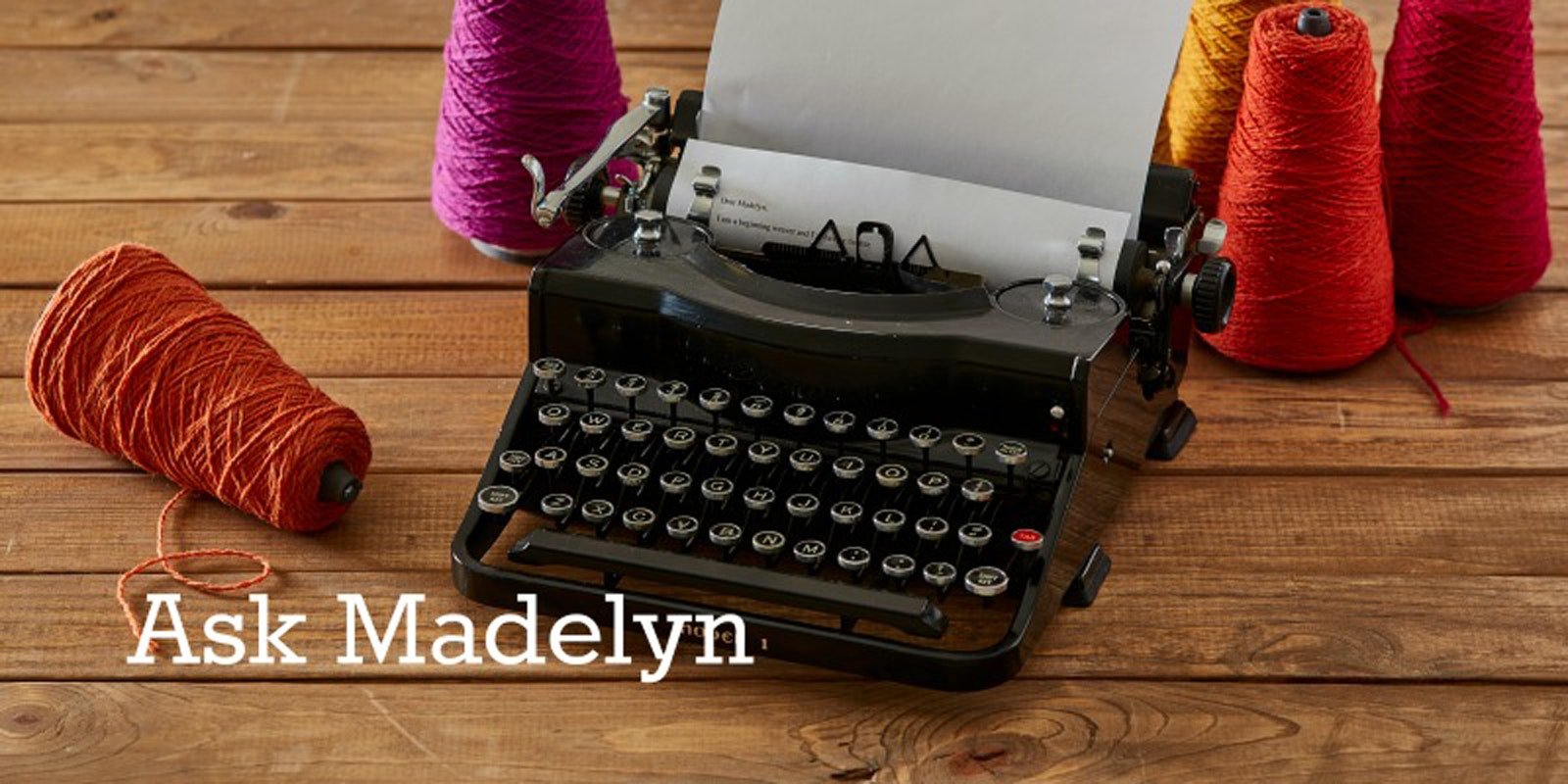I weave on a very ordinary 4-shaft floor loom. I sell some of the stuff I weave, and I often wonder what might be the next step toward growing scale and improving efficiency. This has led me to read a little about sectional beaming, tensioners, and spool racks, but I'm pretty certain I'm not ready for that yet. What are the challenges and limits to dressing my loom with long warps?
Thanks!
—Aaron
Hi Aaron!
In general, the length of warp you can put on a loom is affected by the distance between the warp beam and the back beam. You can only wind on as much warp as won't touch the warp going over the back beam (see photo). This will also depend a bit on how big your actual warp beam is. Here at the Weavers' School, we put on warps (mostly on Baby Wolfs) that are about 30 yd long. We could probably fit close to 40 yd warp length on these looms. We use warping sticks to separate the layers. Smooth paper (butcher-paper type) would allow more length, maybe as much as 50 yd max. (Note that corrugated cardboard would take up much more space than the warping sticks since we place only 2 sticks per turn of the beam. Each layer of corrugated cardboard would be thicker; with it, our warp length might be limited to about 20 yd.)
The second issue to consider is the method used to wind the warp. For warps longer than 15 yd, you'd have to use a warping reel or sectional beaming. For a production weaver, sectional beaming is probably the way to go. It has drawbacks, though. You have to wind a spool for every thread that will go in a single section of the sectional beam. If your beam has 2-inch sections, for a warp sett of 30 ends per inch, you would need to wind 60 spools with enough yarn on each spool to fill as many sections as your warp width uses. So, for a 16 inch warp that is 50 yd long, you would wind 60 spools 8 (sections) x 50 yd long or 400 yd per spool. So you therefore have to have a counter that measures how much warp goes on each spool. You naturally put on a little more just in case, so that at the end of warping you have 60 spools sitting there, each with some yarn on them. (Hopefully some yarn on them since hopefully none of your spools became empty while you were beaming.) In spite of having to deal with the leftover yarn, for really long warps this is probably the most efficient method to use. Another advantage to sectional warping is that you won't have to pack the layers with anything; so the beam will hold the maximum amount of warp it can accommodate, which is determined by the height of the pegs that divide the sections.
If you use a warping reel (and also when you are using a warping board) the process goes much faster with a warping paddle. A paddle allows you to wind multiple ends at the same time (we usually wind 10 ends together), making an individual cross. For this process, you need a cone for each end and a cone stand (there are work-arounds for it). Note that If you are using multiple colors in the warp, both warping with a paddle and sectional warping work best if stripe arrangements coincide with the number of ends in the paddle or in each section.
Madelyn
If you have a weaving question please email Madelyn! View related & recent "Ask Madelyn" posts!


